What’s the best way to tell area residents about plans for a new asylum shelter nearby?
The government should tell communities directly about plans for new asylum shelters, some activists and politicians say.
“It’s just, I don’t know. I don’t know what’s going to happen. There’s an awful thing over the place with people being sick,” says Annette Flanagan.

Gerard Jervis can’t see it right now.
But Jervis knows it’s there. “It’s like a boil on your nose,” he says. “You can’t help but look at it.”
He passes it when he goes fishing in Darndale. When he hops on his bike to the post office. When he visits the hospital, where he’s being treated for prostate cancer.
He’s sat in his kitchen in Moatview Court. The walls by the table are busy with collages of family photos. Piles of fishing rods are stocked by the front door.
“My wife has had cancer in five parts of her body,” he says. It spread from her breast – affecting her head, liver, spine, and appendix too, he says.
The house is quiet. “She went to Lourdes this morning,” he says.
Like others who live around the Moatview Court estate in Priorswood in north Dublin, Jervis is deeply worried that the sprawling – and illegal – dump, just the other side of a green on council land, is making him and his neighbours sick.
They’re worried that pollutants may have seeped into the ground under the growing mounds of household and construction waste – there are dirty nappies, empty bottles, keg-like empty industrial containers, bricks, tyres, machine parts, and even, they fear, asbestos.
Only some of the waste is visible. It pokes through the undergrowth along the path that runs from Moatview Court to Cara Park. Just north of that are mounds high as single-storey homes, with shrubs atop the older piles.
Last February, there were smouldering ashes alongside the path. Residents are worried, too, that fumes from the sporadic fires at the dump have spread toxins through the air, into their homes.
In April, an analysis of cancer incidence in the wider area by the National Cancer Registry of Ireland (NCRI) flagged high rates of lung cancer.
Rates were 70 percent higher than expected, if incidence rates were expected to be the same as Dublin as a whole, it said. They were 110 percent higher than expected, if incidence rates were expected to be the same as Ireland as a whole.
But figuring out if the area’s high cancer rates have been caused by the landfill is complex, say health researchers.
“The whole etiology of cancer is complicated, because it’s not always down to one factor, it’s a mix of factors,” says Sandra Deady, a data analyst at the NCRI.
Still, the dump is a blight, says Jervis. “Even if they discover that the dump is not the cancer problem, it’s still a problem that it’s there,” he says. “It shouldn’t be there. Somebody do something.”
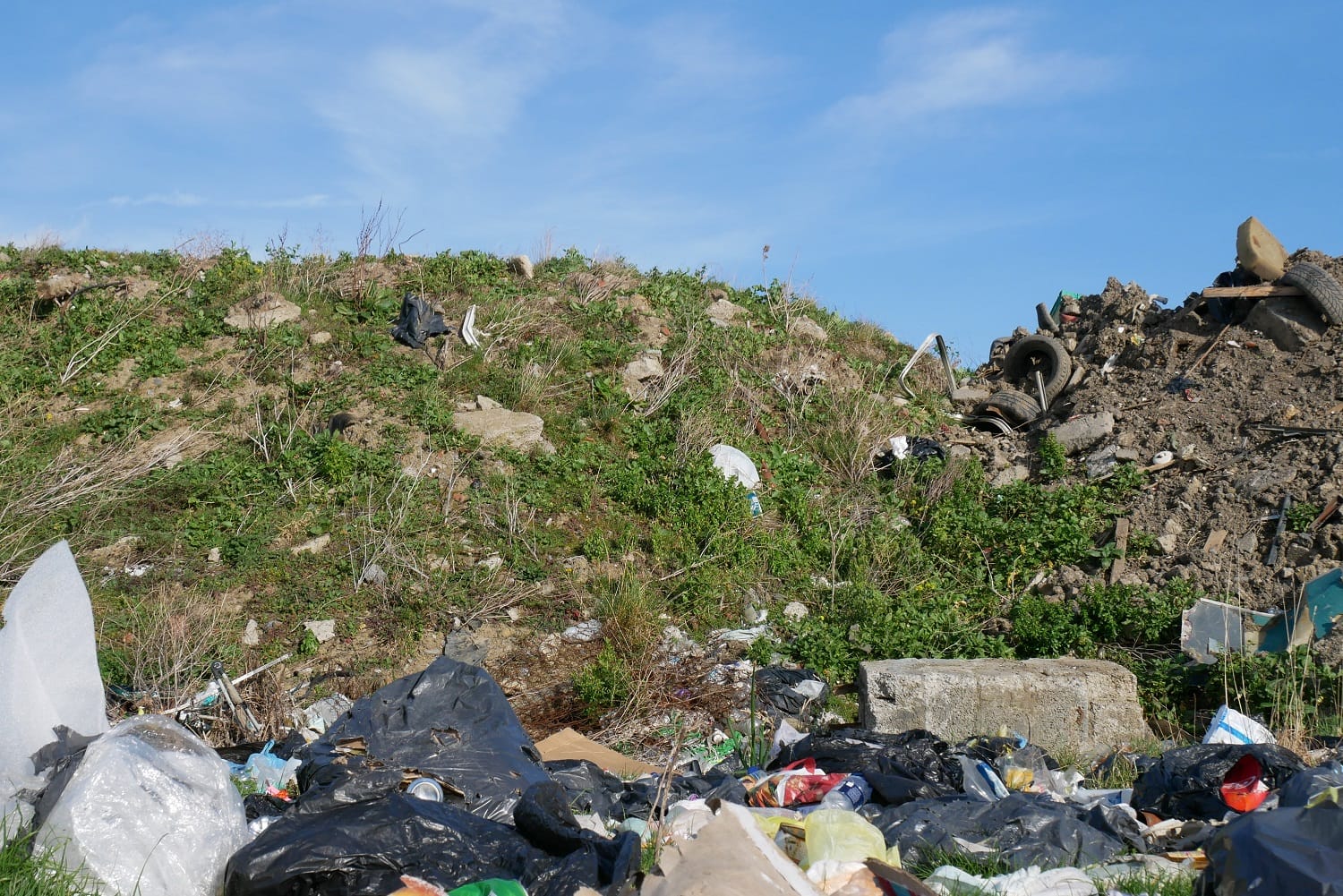
The NCRI analysis didn’t look just at Moatview Court.
Using smaller areas risks identifying individuals due to the relatively small number of cancer patients and can make it hard to get figures that are statistically significant, said Deady, the NCRI data analyst.
It took in, therefore, a wider swathe of that corner of the city.
Overall, the NCRI analysis found rates for some cancers in five electoral divisions around Moatview Court were the same, or lower, than expected.
Two of the findings were statistically significant. Prostate cancer numbers were statistically significantly lower than local and national rates, it says. Lung cancer rates “were statistically significantly higher”, the analysis found.
“That would match what we’ve seen in general geographic distributions of cancers across Dublin as a while,” says Deady.
Past analyses have shown big variation in rates across the city.
Priorswood, where Moatview Court is, is classed as a highly deprived neighbourhood. Poorer areas generally have higher rates of several cancers – such as lung, stomach, head and neck cancer – the NCRI Cancer Atlas found in 2007. North Dublin has particularly high rates of lung cancer.
Behind this are things like family history, and lifestyle factors, diet and exercise, smoking – the last of which is a major factor in lung cancers, says Deady. But “we don’t have data that we can link to say the people who have lung cancer were all smokers”.
That said, there’s also the possibility of external factors and exposure. “Somebody could have exposure to pollutants or asbestos in the air, but it’s very hard to measure that,” she says.
There’s the further complication, too, that if it were environmental, people could have been exposed to something somewhere else, and then moved into the Moatview neighbourhood.
The cancer registry also doesn’t hold information on how long people have lived in a place, which is important when considering possible environmental factors, Deady says.
Fears among residents, and uncertain science, make for an unsettling combination, heightening stress for those living within sight of the dump.
The NCRI data only goes up to 2014 because it takes a while to come in and be cleaned, merged and geocoded. “There’s always a bit of a lag, which is normal for all cancer registries,” says Deady.
But it’s in the last three years that some in Moatview Court say they’ve clocked more neighbours around them falling ill.

Last September, Monica Fetherston was diagnosed with lung cancer. That same month, her neighbour Ellen Bollard got the same diagnosis.
“It was a bit of a shock, the two of us together,” said Fetherston, 62. She is sat in the kitchen of a neighbour, Annette Flanagan’s home, at the end of a long table of ham sandwiches and cream cakes.
The row of homes on the eastern end of the estate looks out over small yards with low walls, and then onto a sparse green with a few trees. It’s about 200 metres from the edge of the dump.
Sometimes when neighbours gather, they find themselves listing the homes on the streets around here where they’ve heard that people are sick.
“It’s mostly lung cancer,” says Flanagan, of the cases she knows about. Others have chronic obstructive pulmonary disease, she says.
A manicurist, just a few days back, told Flanagan that her mother was struggling with her breathing. “I just met her,” says Flanagan.
They talked about knocking on doors, counting the cases, says Flanagan. She keeps meaning to do that. But “I’ve so much going on”.
Any smaller survey would also run into the same challenge of statistical significance as the NCRI did with its research. Another piece, but still an uncertain one, of a complicated picture.
“It’s been hell,” says Fetherston, at the kitchen table.
The rounds of chemotherapy and the tiredness. “My kids are terrified something is going to happen to me,” she says.
The sickness started with a tightness, she says, patting her chest. “I just didn’t feel right. Not pains, like muscular.”
The doctor gave her painkillers and antibiotics. They weren’t working, she says she told him. She insisted on a letter for an X-ray. At Beaumont Hospital, doctors diagnosed her with lung cancer. Fetherston is in remission.
Five weeks ago, Ellen Bollard died. She was 58.
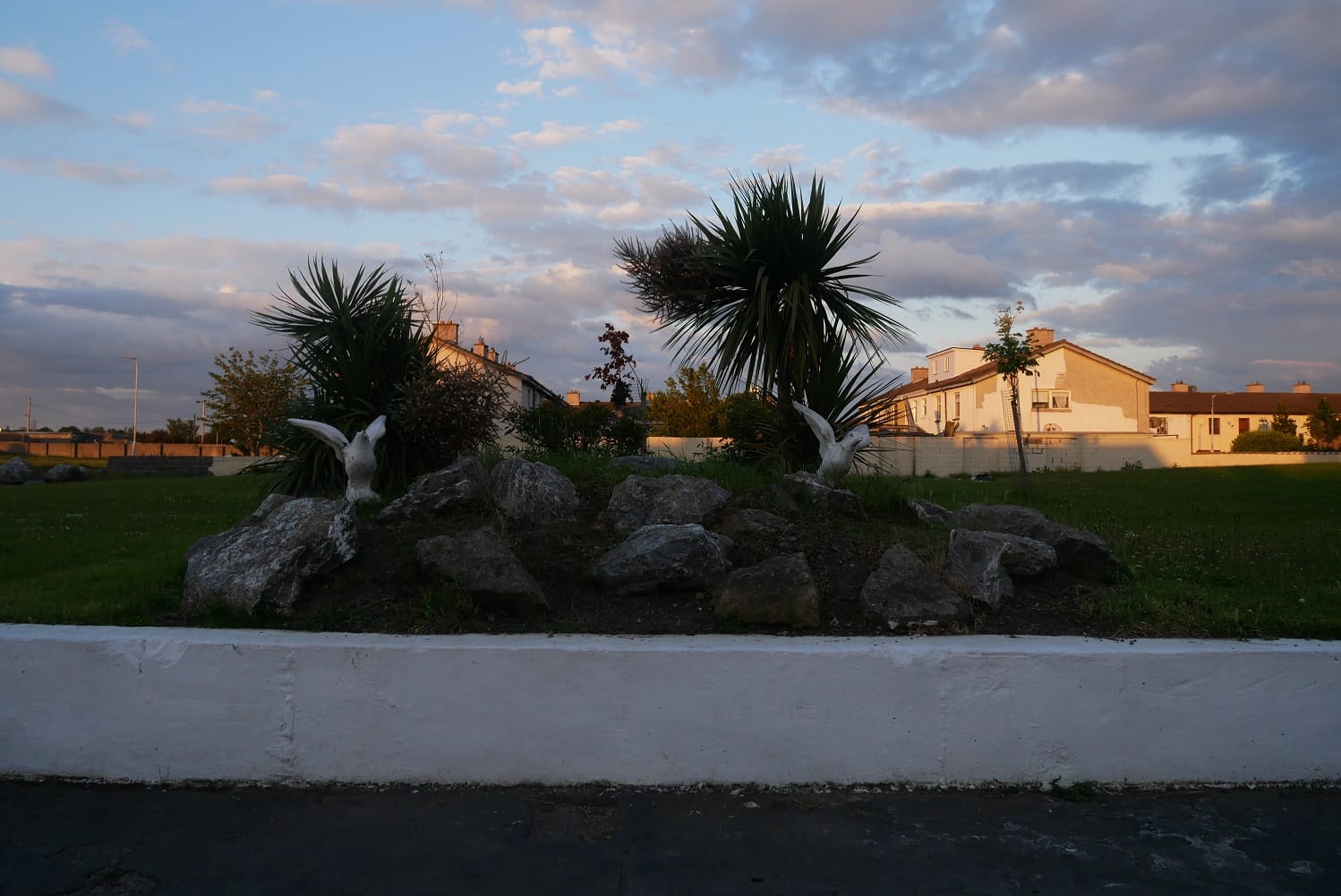
When NCRI get an inquiry about local cancer rates, they pass it onto the Health Service Executive’s (HSE’s) Department of Public Health.
It’s up to them to decide what the findings warrant. A closer look, say, or targeted supports for communities in crisis.
Dr Ruth McDermott, a public-health specialist with the HSE’s Department of Public Health, pointed also to the higher-than-average lung cancer rates across north Dublin as a whole.
Cigarette smoking is the most common risk factor for lung cancer, with between 85 and 90 percent of cases attributable to smoking, she said, by email.
McDermott says the Department of Health and the HSE run programmes to cut smoking rates, and national clinical guidelines to support smoking cessation are being developed.
“These guidelines will contain a suite of interventions to further reduce smoking prevalence in the population, including targeted interventions for key populations,” she said. They’ll be targeted at deprived areas, such as Priorswood.
Several population surveys support the finding that smoking rates are higher in disadvantaged areas, says McDermott. “Smoking prevalence rates here are likely to be higher than average.”
Annette Flanagan says it doesn’t add up to her. Bollard, for example, didn’t smoke, she says. “This is the thing that they say straight away.”
It is another uncertainty, adjusting expectations based on the findings of general surveys, rather than individual histories, says Jan Rigby, a health geographer at NUI Maynooth.
“All you can assume is that generally smoking rates tend to be higher in poorer areas,” she says. “So much of that is linked to people struggling and it’s a sort of stress reliever.”
But “because these are only surveys, it is quite difficult to say”, she says.
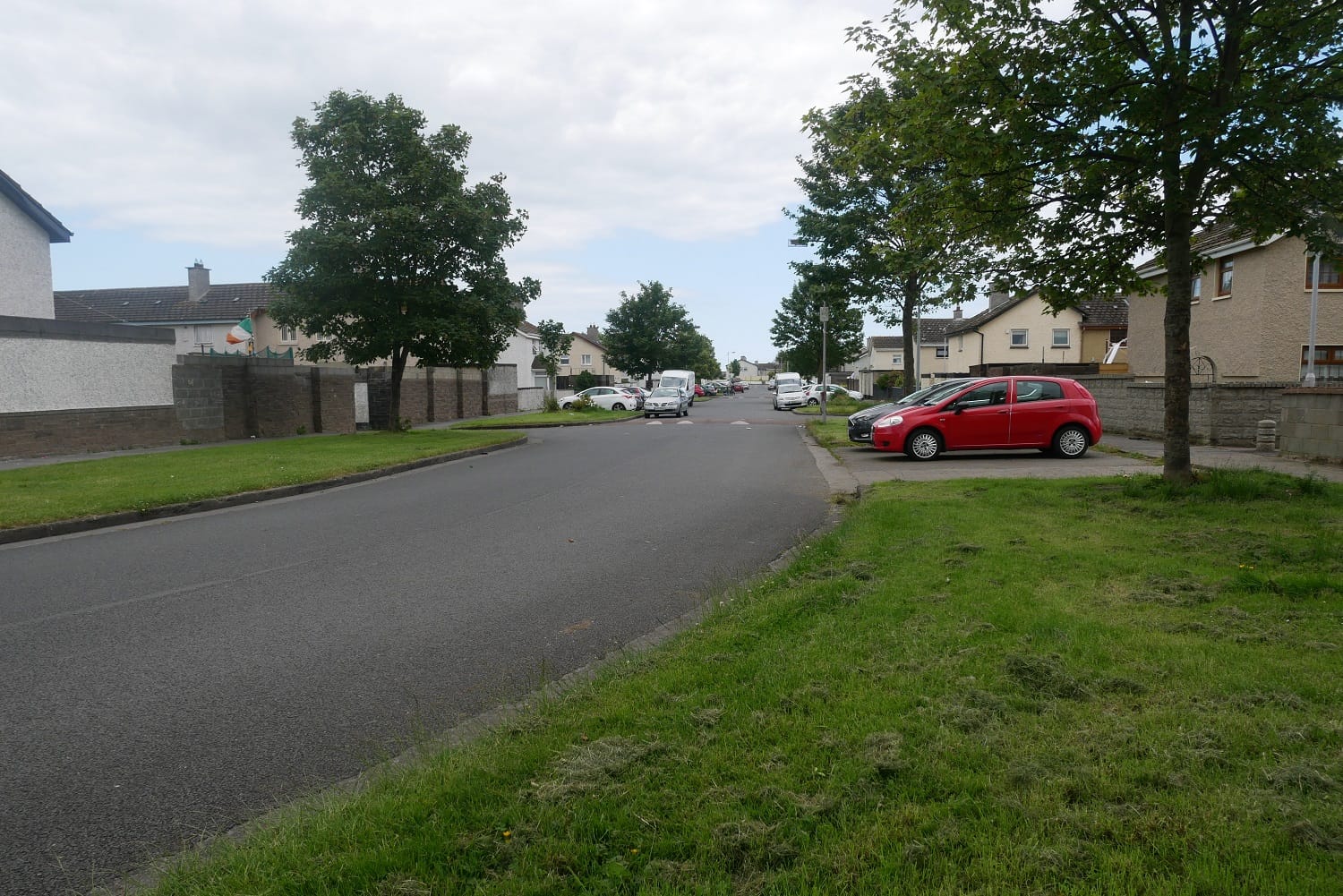
McDermott pointed also to the findings of a couple of reviews looking at the impact of living close to a landfill on human health.
It doesn’t pose a significant risk, concluded a 2011 review by the UK’s Health Protection Agency (HPA). But that was for well-managed modern landfill sites – not illegal, unregulated ones.
Also, studies that look at the incidence of different “adverse health events” can only say if there’s an association, not whether something has caused, for example, cancers or congenital abnormalities, the review noted.
A 2015 review by the World Health Organisation said similar: “Some studies have provided evidence of an association between residence near legal landfills and different health risks, but overall such evidence is not conclusive.”
There were so many differences in waste disposal and study designs and more research was needed, it said.
But “health impacts of waste disposal can be substantial”, the review also said. “While modern technology for waste management can dramatically reduce noxious emissions and human exposure to hazardous agents, many cases persist where old generation facilities are in use, or worse where informal uncontrolled disposal such as casual dumping or open-air burning of waste occurs, typically affecting marginalized groups.”
Rigby, the health geographer, says that to even have a shot at working it out, you would need to capture substances in the environment.
How close is the airport, and do pollutants blow their way? Is there pollution from nearby motorways? What are radon levels? Then there’s the dump too, of course.
It can be really tough. “You end up needing to dig through the literature as to what sorts of cancer, and what sorts of chemicals have been identified causally,” she says.
“It’s always a difficult one,” says Rigby. “It certainly doesn’t mean that they’re wrong to be worried. Because not enough notice is taken of people knowing themselves and their community and their neighbourhood and sensing change.”
Says Rigby: “If people are worried about the environment they’re living in, this will affect their psychosocial health. The stress can do you damage.”
McDermott, of the HSE’s Department of Public Health, said, “It is unacceptable from a public health perspective to have an uncontrolled dumping site in close proximity to residential housing.”
Nobody monitors what’s dumped there or controls emissions, she says. Her department “has written to the relevant local authority to express our concern about this issue from an environmental and health perspective and to urge them to remediate the dump”.
The Environmental Protection Agency has a code of conduct that local authorities are supposed to follow, to deal with illegal dumps in their areas. Part of that is an assessment of what is buried there, before they decide how to deal with it.
But in response to a Freedom of Information Act request in April for any assessments carried out on the illegal landfill ahead of some clearing that was done last summer, a Dublin City Council official said: “To my knowledge there was no technical report or assessment carried out for this removal.”
“We need it tested,” says Flanagan, who lives in the neighbourhood. “At least, we could rule that out if we can get it tested. Personally, myself, I think it is.”
“It’s just, I don’t know. I don’t know what’s going to happen. There’s an awful thing over the place with people being sick,” she says.
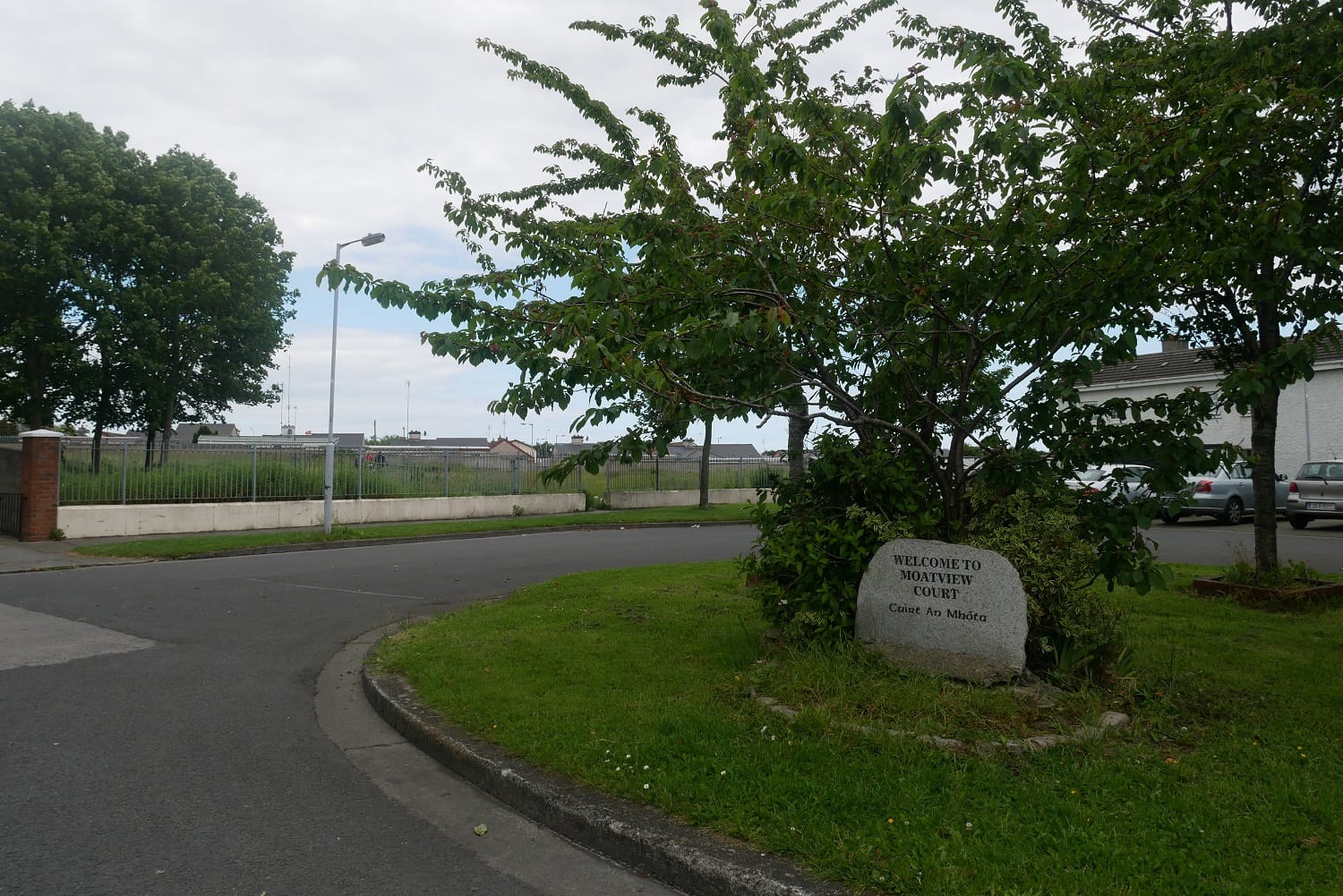
Moatview Court, an enclave of pebbledash two-storey homes, was built in the early 1980s. “Ninety percent of us are townies,” says Jervis, who was one of the first to move in.
There were families from North Great Georges Street and Sheriff Street, Sean McDermott Street, Gardiner Street, and Summerhill, drawn from Dublin’s north inner-city to its northern fringes.
“We all knew one another. We brought that kind of family thing with us,” he says.
When Bollard died a month ago, neighbours rallied as always.
They made sandwiches and tea. As ever, the “angel in the Darndale chipper” sent piles of hot food, paper plates, and paper cups, so the dirty dishes wouldn’t pile up, says Flanagan.
Funerals are costly, so neighbours chip in. “Anybody who dies, we do a collection. That’s what we do,” says Flanagan.
Some trimmed the grass around the estate, painted walls, and weeded the verges. The state it was in, they didn’t want Bollard’s family to have to bring her body back to it, says Flanagan.
They used to do that a lot. One summer several years back, they called into the local priest, pub, and curry shop for donations for paint. “We went everywhere, we didn’t stop,” says Flanagan. “Everybody came out and started helping us.”
“It gave everybody a heart,” she says. “That was when we started to say we’re going to have to do something, we’re going to do something now.”
Residents had put in a rockery, too. Council officials told Flanagan that she had to get rid of it, she says. Because of “health and safety”.
“We just did it to try and make this place, to try to make it into something. And it’s health and safety, and health and safety,” she says.
“It’s the only thing we have. We’ve that illegal landfill to keep looking at,” she says. “And it’s so depressing. That could be a lovely park. We could be looking at a lovely park.”
A spokesperson for Dublin City Council said last month that it hasn’t asked or told residents to get rid of the rockery.
The rockery stayed, anyway. But as more have fallen sick, it’s become harder to keep the area up, says Flanagan. “We were doing it all the time, but we can’t.”
Christmastime, they usually decorate, clean up, and repaint. Last year, all they could do was string up lights.
“We couldn’t do anything. Everybody was sick,” says Flanagan. “There was no one to do anything.”
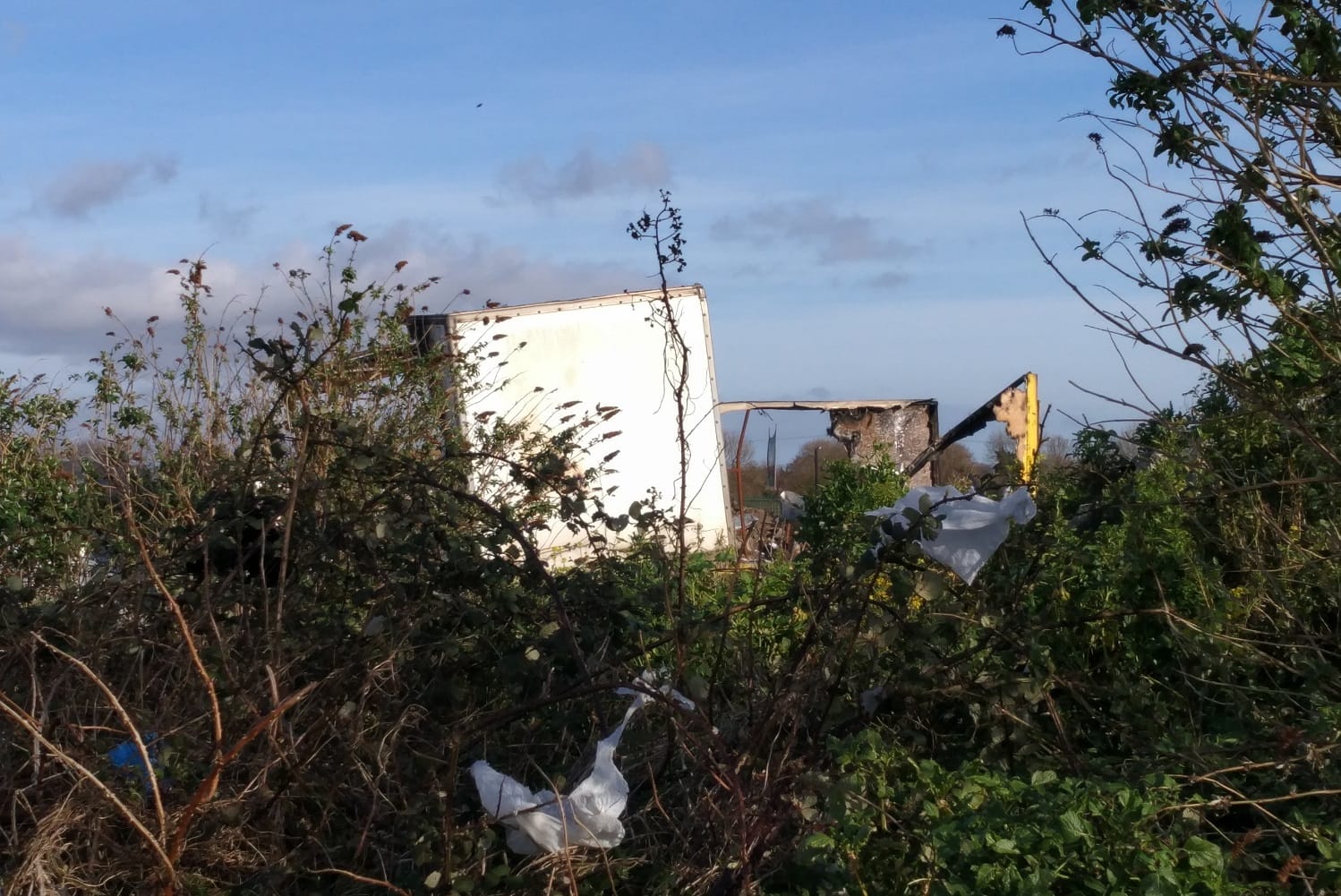
The illegal landfill is long, tall, and organised.
In February, a truck with a mechanical arm dipped and deposited clawfuls of industrial waste onto the ground beside it. There were fragments of charred paper and piles of ashes alongside the path.
Jervis says that, in the past, he’s seen plumes of smoke coming from the direction of the dump, sometimes for two or three days in a row.
Those running the landfill were burning plastic coating, to strip precious metals from wires, he says. “They burn it to get the copper out.”
“The toxins off that is terrible,” he says. “Especially if you get the wind the wrong way around. I’ll be honest that’s not an everyday occurrence, but the dump is an everyday occurrence.”
On a recent Monday evening, the peach sky over Moatview Court was streaked with long grey clouds.
Flanagan talked with envy about other parks on the north side of the city: plush with trees and neat grass, she says.
She looks out past the low wall at the end of her short yard, out over the sparse green cast in a golden light – and past the old bed abandoned there since Christmas, she says – and out further towards the dump.
There’s no movement right now. But she, like Jervis, says there have been fires burning in the past.
At one point, she got a mask to protect from fumes, she says, and she cups her hand over her mouth.
You may also want to read “After a Flurry of Activity, No Visible Movement on Clearing Giant Illegal Dump” in last week’s edition.
Get our latest headlines in one of them, and recommendations for things to do in Dublin in the other.